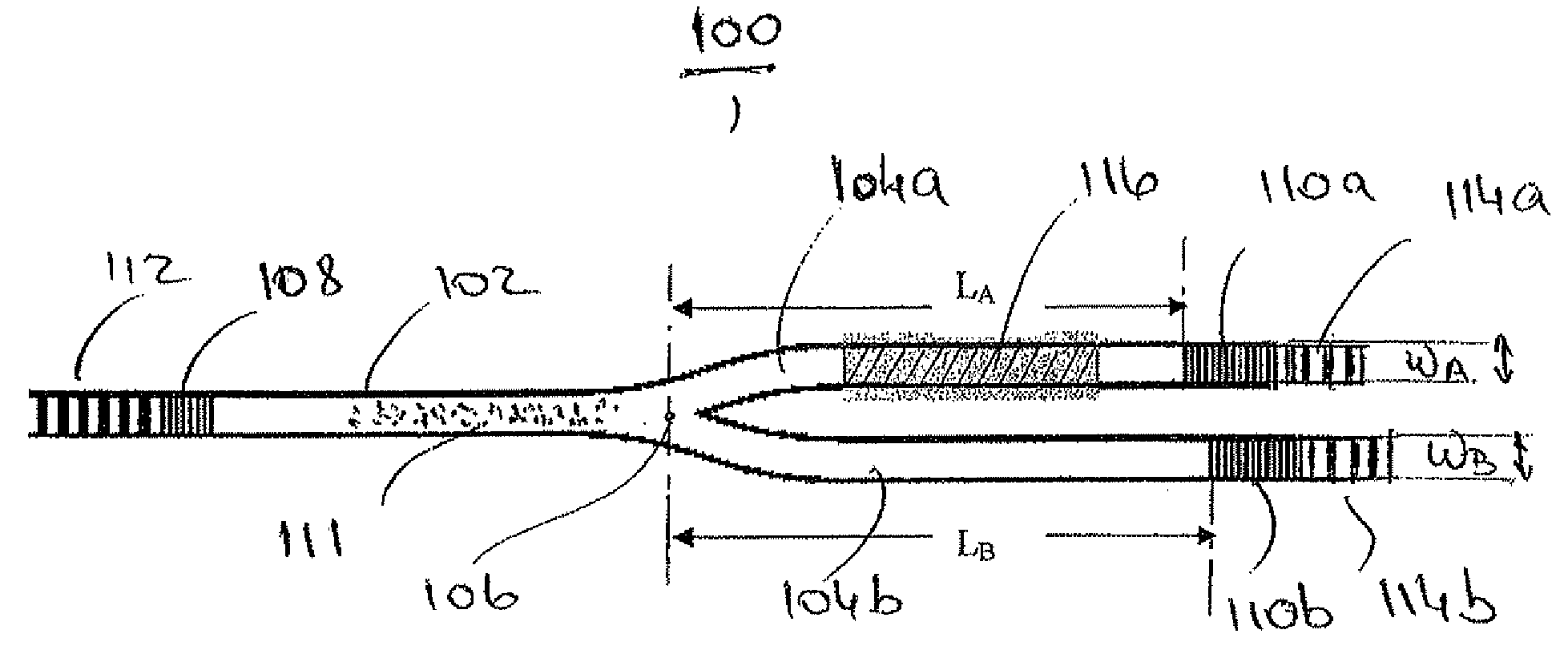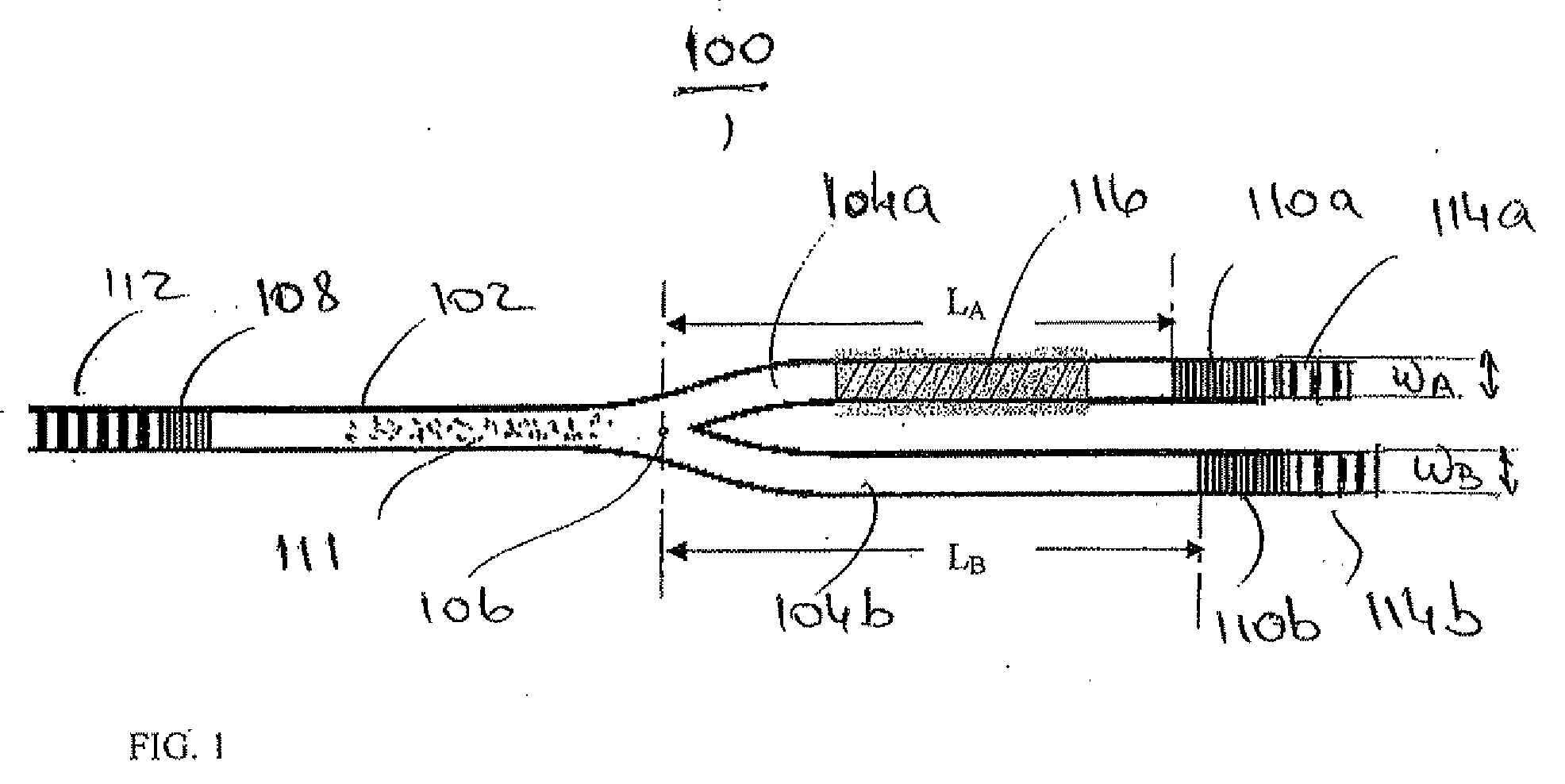Light-emitting intra-cavity interferometric sensors
a technology of interferometry and light-emitting sensors, applied in the field of optical sensors, can solve the problems of “imbalanced” geometry, mismatching of lengths of branch segments by 2.4%, and serious drawbacks of wet immunoassays, and achieves the effects of high sensitivity, minimal non-specific binding effects, and high sensitivity of interferometric integrated optic devices
- Summary
- Abstract
- Description
- Claims
- Application Information
AI Technical Summary
Benefits of technology
Problems solved by technology
Method used
Image
Examples
example
[0042]C Reactive Protein (CRP) (152315, MP) was chosen as a model for an analyte. CMR is a pentameric plasma protein, which its blood levels indicate risk of cardio vascular seizures. Hence, there is a need for a simple, cheap and rid way to measure its concentration in blood. BSA (Bovine serum albumin, A7906, Sigma) served as a control protein.
[0043]Sol-gel ICI laser sensors with three exemplary sets of imbalanced branch lengths LA and LB were designed and fabricated in a sol-gel layer on top of a silica-on-silicon substrate. Details of the sol-gel waveguide fabrication may be found in Asher Peled et al., “Amplification from Nd+3 doped Si—Ti sol-gel channel waveguides”, J. Optical Materials, 2009, in press, and in Peled 2009. Each design was fabricated in a number of copies. Sensor type #1, where LA and LB were respectively 3 mm and 3.06 mm; Sensor type #2, where LA and LB were respectively 10 mm and 10.06 mm; and Sensor type #3, where LA and LB were respectively 20 mm and 20.06 mm...
PUM
 Login to View More
Login to View More Abstract
Description
Claims
Application Information
 Login to View More
Login to View More - R&D
- Intellectual Property
- Life Sciences
- Materials
- Tech Scout
- Unparalleled Data Quality
- Higher Quality Content
- 60% Fewer Hallucinations
Browse by: Latest US Patents, China's latest patents, Technical Efficacy Thesaurus, Application Domain, Technology Topic, Popular Technical Reports.
© 2025 PatSnap. All rights reserved.Legal|Privacy policy|Modern Slavery Act Transparency Statement|Sitemap|About US| Contact US: help@patsnap.com



